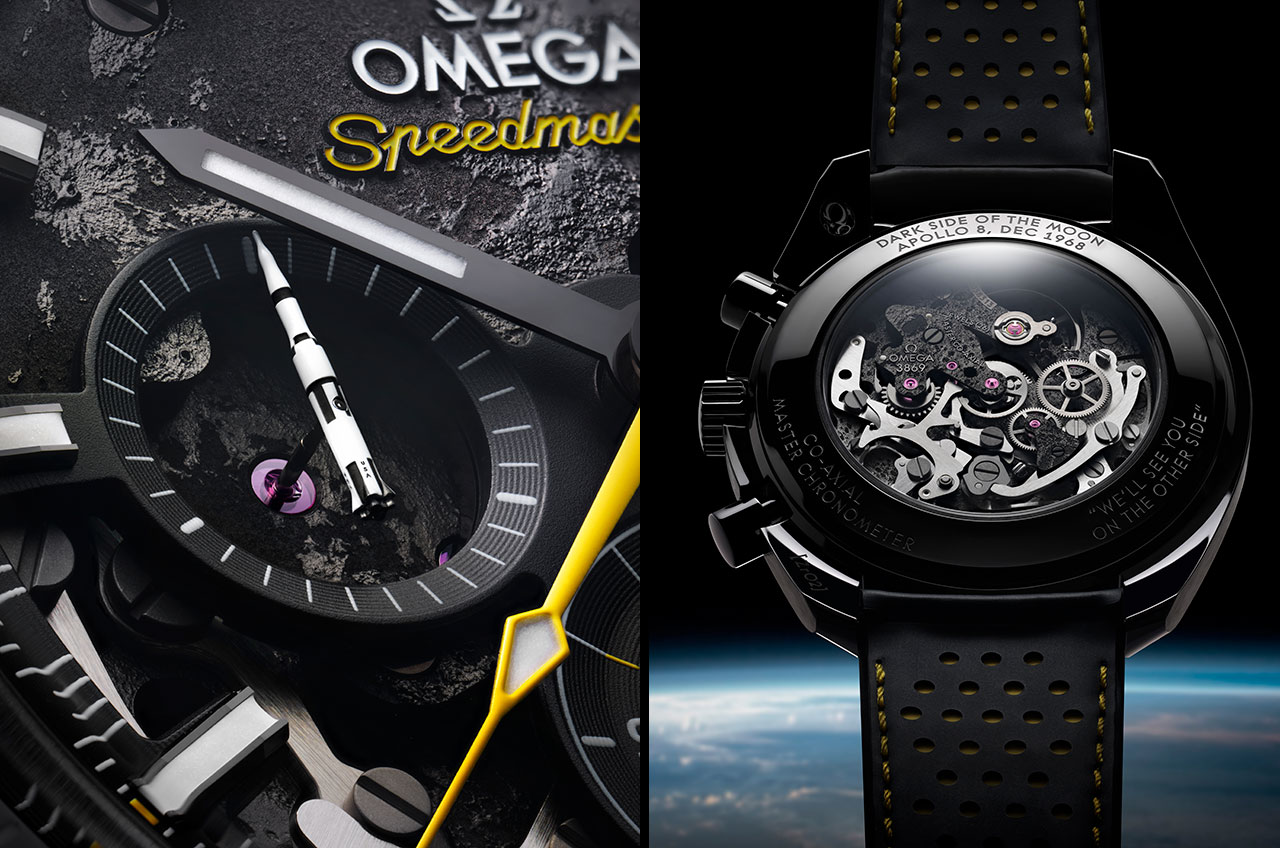Omega adds Saturn V seconds hand to new Speedmaster Dark Side of the Moon watch
'To wear this watch is to make an authentic connection with our lunar neighbor, as well as Omega's own connection to space exploration.'

Omega has returned to the "dark side" of the moon with an updated version of a chronograph saluting the first astronauts to fly there.
The new Speedmaster Dark Side of the Moon enhances the design of Omega's previous commemorative by adding more callbacks to NASA's historic Apollo 8 mission. The 2024 watch, which retails for $14,300, retains and improves upon the function of the time-keeping tool that astronauts Frank Borman, Jim Lovell and Bill Anders wore while becoming the first people to orbit the moon and seeing the far side in December 1968.
"At Omega, the first Speedmaster Dark Side of the Moon Apollo 8 timepiece was released in 2018, marking the 50th anniversary of the mission. This time, the brand has returned to its watchmaking launchpad, elevating the same design with an even finer level of detailing and refinement," the Swiss watchmaker stated in a release issued on Tuesday (Jan. 16).
(To be clear, there is no literal "dark side" of the moon. Although only one side — the "near side" — of the moon faces Earth at all times, the far side receives the same amount of sunlight as its opposite. The dark side, therefore, is whatever part of the lunar surface that is in the shadow of Earth when being observed.)
Related: Facts about NASA's Apollo 8 moon mission
Like the 50th anniversary model, the new Speedmaster Dark Side of the Moon chronograph gains its name from the moon relief on its blackened main plate and bridges. (An even earlier 2013 model, which introduced the name, had a black ceramic bezel and dial but lacked the laser-engraved lunar surface.)
"Just like the moon, this movement reveals two different sides," Omega wrote about the 2024 edition. "The dial-side represents our view of the lunar surface, as seen from Earth, while the back of the watch shows the dark [far] side that only astronauts get to see. This new update has enhanced the moon's definition, thanks to laser engraving and contrasting surfaces."
The lunar surface-adorned movement can be seen through the skeletonized dial, which is made from black anodized aluminum. The 44.25-millimeter (1.74 inches) case, polished bezel and caseback are also crafted from separate pieces of black ceramic, while the tachymeter scale is filled with bright white "Grand Feu" enamel.
The central chronograph seconds hand is rendered in a varnished yellow, a color theme that continues on the watch's perforated strap made from black rubber with a yellow interior. Both are carryovers from the 2018 edition.
New for 2024 is a tiny tribute to the rocket that launched Apollo 8 to the moon in the form of the small seconds hand at 9 o'clock. Engineered from titanium, the hand has been shaped to resemble NASA's mighty Saturn V. The 3D structure was achieved by laser turning, while the colors were created with white varnish, ablation and laser blackening.
"A small yet inspiring detail that celebrates the success of the Apollo program," stated Omega.
Though repositioned, the caseback keeps a series of engravings from the 2018 model, including "We'll See You On The Other Side" the last transmission sent to Mission Control by Lovell just before the Apollo 8 spacecraft slipped behind the moon and out of radio contact for the first time.
"The moon's distant surface has always been a source of mystery and curiosity," said Omega. "To wear this watch is to make an authentic connection with our lunar neighbor, as well as Omega's own connection to space exploration."
"As the world now looks further ahead to the possibilities of the future, the Apollo 8 mission stands as a reminder of what shared human power can achieve."
Follow collectSPACE.com on Facebook and on Twitter at @collectSPACE. Copyright 2024 collectSPACE.com. All rights reserved.
Breaking space news, the latest updates on rocket launches, skywatching events and more!

Robert Pearlman is a space historian, journalist and the founder and editor of collectSPACE.com, a daily news publication and community devoted to space history with a particular focus on how and where space exploration intersects with pop culture. Pearlman is also a contributing writer for Space.com and co-author of "Space Stations: The Art, Science, and Reality of Working in Space” published by Smithsonian Books in 2018.
In 2009, he was inducted into the U.S. Space Camp Hall of Fame in Huntsville, Alabama. In 2021, he was honored by the American Astronautical Society with the Ordway Award for Sustained Excellence in Spaceflight History. In 2023, the National Space Club Florida Committee recognized Pearlman with the Kolcum News and Communications Award for excellence in telling the space story along the Space Coast and throughout the world.



